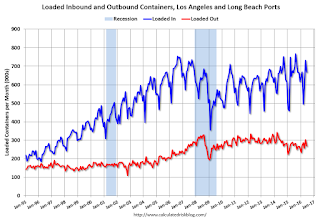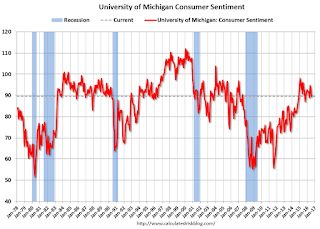Hey, we all like free things from time to time. But for college students living on part-time wages and handouts from Mom and Dad, free is a way of life. The lure of free food brings many teenagers to events they wouldn’t typically attend, and the endless supply of free T-shirts is half the fun of arriving at school during orientation week.
Good news: The free or discounted services you can receive as a student don’t end on campus. By showing your student ID or providing a university e-mail address, you can save money on everything from laptops to museum tickets.
And if you’ve graduated, don’t assume that you can’t still receive discounts. Taking even one course at a community college will grant you student status.
Score deals in these 18 categories and more:
Everything. With the Amazon Student program, your university e-mail address gets you free two-day shipping on eligible items from Amazon’s vast selection, unlimited digital photo storage and exclusive offers for students during a free six-month trial. After the trial is up, you can upgrade to Amazon Student Prime for 50% off.
For your bulk purchases, try Sam’s Club. If you pay $40 for a yearlong college membership, you’ll receive a $15 gift card, as well as special savings on electronics, dorm-room essentials and more.
Clothes. Many clothing stores offer student discounts, which may be especially appealing to soon-to-be graduates assembling a wardrobe for job interviews, internships and their first full-time gigs. Club Monaco offers the best student discount we’ve found: 20% off full-price or sale items, online or in-store. Banana Republic and Ann Taylor offer a 15% discount on in-store, full-price purchases, and the 15% discount at J. Crew and Madewell applies to all in-store purchases. For stores with online-only discounts, look to Levi’s (15% off) or Topshop (10% off).
Computers.Apple offers varying discounts—as much as $100 in savings on the purchase of Mac computers and as much as $20 in savings on the purchase of an iPad. Microsoft offers 10% off or more in its Education Store, which sells products such as PCs, Surface tablets and Xboxes. At Best Buy, students save $100 on all MacBook Air and MacBook Pro computers, as well as $150 on select Microsoft Surface devices. Lenovo discounts laptops upward of 22%. HP encourages students to sign up for HP Academy, a program that includes up to 20% product discounts and free shipping.
Software. If you’re looking for software to load onto your new computer, you have several options. Many colleges offer their students free Microsoft Office 365 (check here to see if you’re eligible), which includes program installation on as many as five laptops or mobile devices. Microsoft’s Visual Studio Community developer tool is free for all students. Those interested in graphic design will enjoy getting 60% off Adobe Creative Cloud, which includes programs such as Photoshop and InDesign. If you’re trying to learn a new language, try Rosetta Stone at a 10% discount. And save 50% on Norton software that will protect your computer from viruses.
Phone plans. To save on your monthly phone bill, check with your provider to see if you qualify for a student discount. Sprint and AT&T offer discounts to students at eligible schools. Sprint’s discount is typically between 10% and 23%, and AT&T’s is about 17%.
Food. Although most national chains don’t advertise their student discounts, some restaurants, such as Dairy Queen, deduct about 10% off your purchase. Check with your local franchises, as not all locations offer a discount.
Local restaurants may also have student discounts. Check online, or ask in person.
Movie tickets. With discounts that vary by location, student movie buffs can visit participating AMC theaters for a lower price every day after 4 p.m. Cinemark theaters also offer student discounts that vary by location.
Newspaper and magazine subscriptions. Student readers receive a discount on subscriptions to the New York Times, the Wall Street Journal and the Economist. You can also receive a free digital subscription to the Washington Post.
Music. Student music lovers can access Spotify Premium for 50% off per month.
Shows and events. Cities across the country have discounts on entertainment for students. In New York, students can save with $25 weekday tickets to the Metropolitan Opera or $29 day-of orchestra tickets to the American Ballet Theatre. Normally, these tickets cost more than $100, and sometimes closer to $200. For Broadway tickets and other performances in the area, try Student Rush, a website that offers up-to-date savings tips.
You can also find a variety of entertainment discounts in the nation’s capital. The Kennedy Center and Wolf Trap, two popular performance venues, sell tickets to students for 50% off.
The Houston Ballet sells $10 “rush” tickets to students 90 minutes before select performances, and the Memphis Symphony Orchestra offers $5 concert tickets to students. Check with your local venues to see what discounts they offer.
Museums. Big-city museums offer discounts, too. For example, New York City’s Metropolitan Museum of Art has $12 student tickets, and the American Museum of Natural History has $17 student tickets.
In D.C., the Newseum, a journalism museum, has a 10% ticket discount, and the Phillips Collection, an art gallery, offers student tickets for $10 Tuesday through Sunday.
Sporting events. If you’re a baseball fan, you can find discounted tickets to Major League games. Teams such as the Washington Nationals, the Boston Red Sox and the New York Yankees sell student tickets for as much as 50% off. If you can’t make it to a live game, you can subscribe to MLB.TV instead at a 35% discount.
Gym memberships. If you’re starting a new fitness regime to fight the effects of college dining hall food, try joining Gold’s Gym, which has a student membership discount at select locations, or Core Power Yoga, which offers specialty rates for students.
Travel. If you’re planning on studying or traveling abroad, consider buying an International Student ID card ($25). Cardholders earn discounts on services in 125,000 locations across 130 countries, including up to 60% off tickets to West End theater performances, 25% off a graffiti and street art walking tour in Brooklyn, and 50% off a subscription to the Financial Times. To keep track of discounts on the go, download the ISIC Benefits app.
For cheaper global travel arrangements, you can use Student Universe or STA Travel, two free websites with a variety of student rates on flights and hotels. Eurail, a European train service, offers a 35% discount on passes for anyone between 12 and 26.
For travel within the U.S., consider buying a Student Advantage card ($22.50). It gives you discounts on Greyhound tickets and Choice Hotel bookings, as well as breaks at an assortment of places unrelated to travel, such as Lenovo, AMC and Foot Locker. For those who prefer traveling by train, Amtrak offers a 15% discount. Students at certain New York schools, including Cornell University, Ithaca College and Vassar College, have access to Shortline bus tickets at discounts of 15%.
Cars. Being a student can even help you buy your own car. The GM College Discount Program allows students to purchase or lease vehicles at a reduced price—for example, you could save $2,297 off the MSRP on a 2016 Chevrolet Equinox.
Insurance. To protect your car, consider Allstate, State Farm or Geico insurance. All three offer discounts to full-time students with good grades, and the discounts are available even if the policy is under your parents’ names. Allstate also gives a 35% discount to students who attend college 100 or more miles away from where their car is garaged. State Farm offers a similar discount if a student uses his or her car only during school breaks.
Local food and entertainment. New York University offers specially priced tickets for events around the city (including Broadway shows), and the College of William & Mary provides students with free Collegiate Passes to historic sites in Colonial Williamsburg.
Students bearing a University of Michigan ID card have access to a whopping 400+ discounts on local products and services, ranging from scuba equipment to organic pizza. Rice University’s Hedgehopper program encourages local businesses to offer discounts that help students experience Houston. About 20 restaurants, boasting fare as varied as Turkish food and a “chocolate bar,” give students 10% to 25% off, and several non-food businesses participate, too.
Savings websites. If you would like to hear about daily student deals, sign up for websites such as Save the Student, UNiDAYS and StudentRate. These sites inform members about discounts on everything from clothing to technology. You can also use non-student-focused websites such as RetailMeNot; simply search “student discounts.”
The best rule for finding student discounts is to ask. Look for deals at restaurants, clothing stores, museums and more. Even if a discount isn’t advertised by a business, one may be available.











